Sony has had an interesting few years. In many ways, 2018 was a defining year for the brand with its launch of the Sony A7 III, which was lauded by pro, amateur, ardent DSLR user and brand devotees alike. In 2021, this camera was still the star of the show; that is, until Sony introduced us to the A7 IV. No doubt the resolution junkies and AF addicts out there will point to the A7R V, A9 II and Sony A1 and make a case as to why they are the best Sony cameras. And, of course, they will be right. Sony has introduced some amazing cameras with groundbreaking technology throughout its range.
In recent years we’ve been wowed by the long-awaited Sony A7S III, the entry-level A7 series camera, the Sony A7C and the popular vlogging camera, the Sony ZV-1. And in early 2021 Sony introduced one of the most exciting cameras in a long time, the Sony A1.
With the A7R V debuting in 2022, we now go into 2023 with a fully updated Alpha range. With this in mind, what are the best Sony cameras you can buy? Having used the full range, we’ve broken them down according to the best Sony cameras for different specific needs. But first, let answer some of the common questions people have about Sony’s camera range.
Which Sony cameras are full frame?
Sony’s full-frame cameras are a little more difficult to decipher than other manufacturers if you’re unfamiliar with the system. All of Sony’s A7 series cameras – the Sony A7 IV, A7C, A7 III, A7R IV, A7R V and A7S III – boast full-frame sensors. The Sony A1 and Sony A9 II have full-frame sensors as well, as does the new Sony FX3 cinema camera.
You can still buy previous models of the current A7 series cameras, and these are all full frame as well. The DSLR-styled A-mount Sony A99 II is also still available for purchase and boasts a 35mm full-frame sensor.
Which Sony cameras are weather sealed?
As you might expect, Sony’s professional and advanced enthusiast full-frame cameras are all weather sealed. These include the new flagship Sony A1 and the Sony A7 series cameras, which includes the Sony A7C, A7 III, A7R IV and A7S III, as well as the previous versions of these cameras. What’s more, the Sony A99 II also features environmental sealing.
The best Sony cameras you can buy today
So what are the best Sony cameras to buy? It depends, of course, on what you want to shoot. Below we’ve listed the best cameras for different genres and levels of ability based on our tests. For a deeper dive into the many different camera types and features available, check out our range of camera buying guides.
Best Sony camera for amateurs
No camera has gained quite as much interest over the years as the Sony A7 III, although you could argue that the Nikon Z series has had a good try. And now we have its successor, the A7 IV. But, of course, not everyone wants a full-frame camera.
Sony A7 IV
Specification
- Camera type: Full-frame mirrorless
- Announced: 21st October 2021
- Sensor: 33Mp full frame (35.9 x 24.0mm) BSI Exmor R CMOS sensor
- Lens mount: FE
- Sensitivity range: Stills: ISO 100-51,200 (expandable to ISO 50 to ISO 204,800), Video: ISO ISO 100-51,200 (expandable to ISO 100-102,400)
- Still Image format: Jpeg, HEIF, raw (Sony ARW 4.0)
- Video format & compression: XAVC S: MPEG-4 AVC/H.264, XAVC HS: MPEG-H HEVC/H.265
- 4K Video (XAVC HS): 3840 x 2160 (4:2:0, 10bit, NTSC): 60p (150 Mbps / 75 Mbps / 45 Mbps), 24p (100 Mbps / 50 Mbps / 30 Mbps), 3840 x 2160 (4:2:0, 10bit, PAL): 50p (150 Mbps / 75 Mbps / 45 Mbps), 3840 x 2160 (4:2:2, 10bit, NTSC): 60p (200 Mbps / 100 Mbps), 24p (100 Mbps / 50 Mbps), 3840 x 2160 (4:2:2, 10bit, PAL): 50p (200 Mbps / 100 Mbps)
- 4K Video (XAVC S): 3840 x 2160 (4:2:0, 8bit, NTSC): 60p (150 Mbps), 30p (100 Mbps / 60 Mbps), 24p (100 Mbps / 60 Mbps), 3840 x 2160 (4:2:0, 8bit, PAL): 50p (150 Mbps)5, 25p (100 Mbps / 60 Mbps), 3840 x 2160 (4:2:2, 10bit, NTSC): 60p (200 Mbps)56, 30p (140 Mbps), 24p (100 Mbps), 3840 x 2160 (4:2:2, 10bit, PAL): 50p (200 Mbps)5, 25p (140 Mbps)
- 4K Video (XAVC S-I): 3840 x 2160 (4:2:2, 10bit, NTSC): 60p (600 Mbps)56, 30p (300 Mbps)6, 24p (240 Mbps), 3840 x 2160 (4:2:2, 10bit, PAL): 50p (500 Mbps)5, 25p (250 Mbps)
- Movie functions: Audio Level Display, Audio Rec Level, PAL/NTSC Selector, Proxy Recording (1280 x 720 (Approx. 6 Mbps), 1920 x 1080 (Approx. 9 Mbps), 1920 x 1080 (Approx. 16 Mbps)), TC/UB, Auto Slow Shutter, Gamma Disp. Assist
- Autofocus system: Hybrid AF with 759 phase detection points and 425 contrast detection points, Still images: Human (Right/Left Eye Select) / Animal (Right/Left Eye Select) / Bird, Movie: Human (Right/Left Eye Select), sensitive down to -4EV
- Maximum continuous shooting rate: 10fps
- Viewfinder: 0.5-inch 3,686,400-dot EVF with 100% coverage and up to 0.78x magnification
- Screen: 3-inch 1,036,800-dot vari-angletouchscreen
- Image stabilisation: 5-axis giving up to 5.5EV compensation
- Storage: Dual: 1: SD/SDHC/SDXC (UHS-I/II) & CFexpress Type A slot, 2: SD/SDHC/SDXC (UHS-I/II)
- Battery: NP-FZ100 rechargeable Li-ion battery giving 610 images with the screen
- Dimensions (WxHxD): 131.3 x 96.4 x 79.8mm / 5 1/4 x 3 7/8 x 3 1/4 inches
- Weight (including battery & memory card): 658g / 1 lb 7.3 oz
The arrival of the Sony A7 IV has generated a lot of buzz among photographers, much like the Canon EOS 5D Mark II did a decade ago. Sony has made significant improvements to the A7 III, and photographers of all levels have been impressed with its full-frame 33-megapixel sensor, fast focus, and high level of detail. The A7 IV is not an entry-level camera, but it is a versatile option for amateur photographers who want to invest in their hobby and potentially make some money from it. While the A7 IV is not as cheap as the A7 III was at launch and doesn’t have as many video features as the A7S III, it is a capable video camera and is much more affordable.
Overall, the A7 IV is a solid upgrade from the A7 III and is worth considering for those looking to make the jump to the next generation of cameras.
£2400
$2498For
- Good combination of speed and resolution
- Vari-angle touchscreen
- Excellent AF system
Against
- CFexpress Type A card required to get the full feature range
- Video options could be clearer
- Super 35 crop for 4K video at 60p
Sony A6600
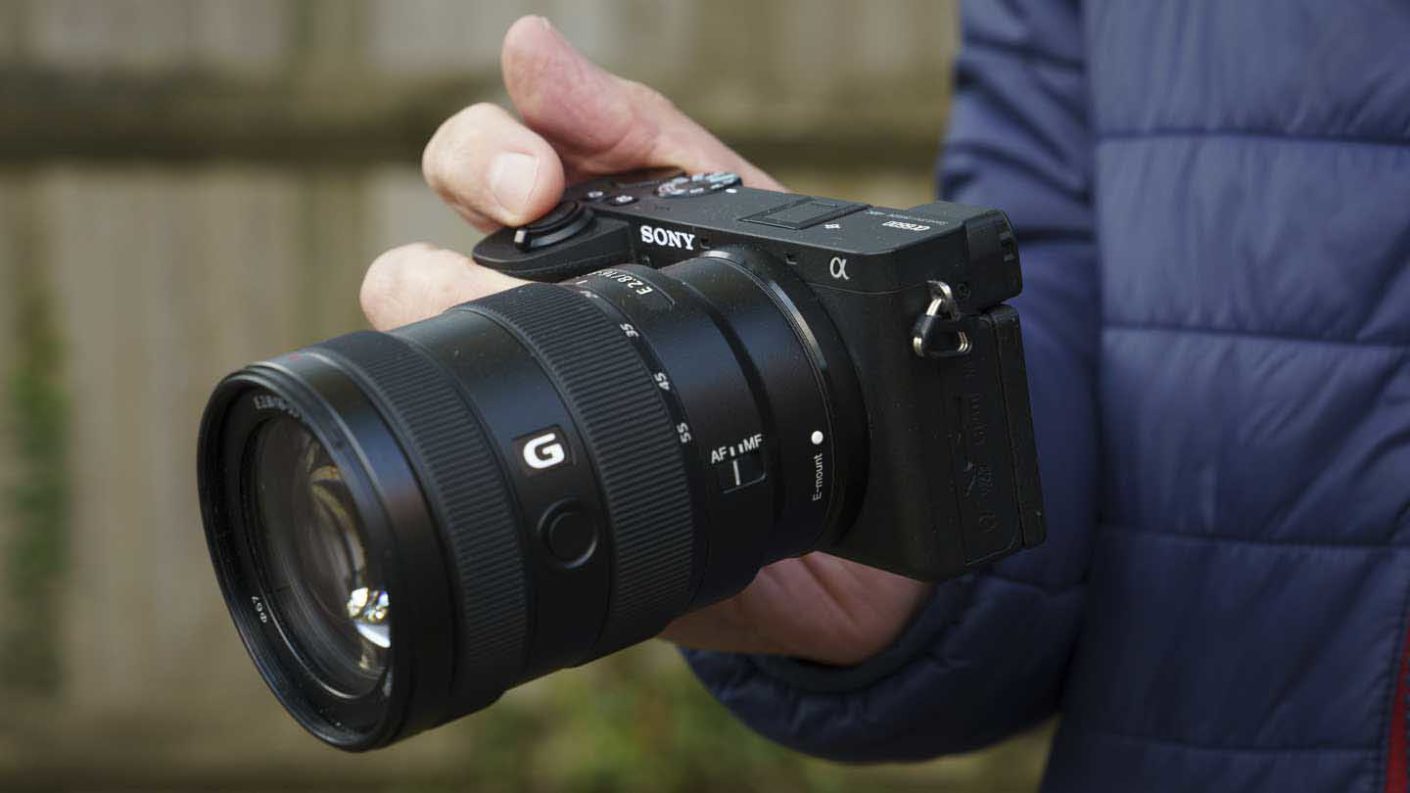
Specification
- Camera type: Mirrorless
- Announced: 28th August 2019
- Lens mount: Sony E
- Sensor: 24.2MP APS-C Exmor CMOS (23.5 x 15.6mm) sensor
- Video: 4K (3840 x 2160) 25/30p video capture with log profiles
- Continuous shooting rate: Hi+: 11fps, Hi: 8fps, Mid: 6fps, Lo: 3fps
- Burst depth: In Hi+ 46 raw files, 99 Extra Fine Jpegs or 44 raw and Jpeg files
- Stabilisation: 5-axis in-body image stabilisation
- Sensitivity: ISO 100-32000 (expandable to ISO 50 – 102400)
- Autofocus : Fast Hybrid AF (phase-detection and contrast-detection each with 425 points), Face Detection and Real-Time Eye AF
- Viewfinder: 0.39-inch 2,359,296-dot OLED electronic viewfinder
- Screen: 3-inch 921,600-dot tilting touchscreen
- Storage: SD/SDHC/SDXC UHS-I or Memory Stick PRO Duo, Memory Stick PRO-HG Duo, Memory Stick Micro (M2)
- Dimensions (W x H x D): 120.0 x 66.9 x 69.3mm / 4 3/4 x 2 3/4 x 2 3/4-inches
- Weight: 503g / 1lb 1.8oz with battery and memory card
The Sony A6600 is designed for photography and videography enthusiasts who want to capture stunning images in any setting. It features a 24.2MP Exmor CMOS image sensor, BIONZ X image processor, and front-end LSI, which enhances image quality in both stills and videos.
One of the most impressive features of the A6600 is Sony’s innovative 5-axis in-body image stabilization system that provides a 5.0-step shutter speed advantage. Additionally, the camera boasts an autofocus acquisition time of just 0.02 seconds, with 425 phase-detection AF points and 425 contrast-detection AF points, covering approximately 84% of the image area.
Sony’s latest Eye AF technology is also included, which employs AI-based object recognition to detect and process eye data in real-time. This feature promises improved accuracy, speed, and tracking performance of Eye AF for both humans and animals, making it an excellent option for portrait and pet photography.
In addition to its photography capabilities, the A6600 also has high-resolution internal 4K movie recording with full-pixel readout without pixel binning in Super 35mm format, built-in interval shooting for time-lapse videos, and a 180-degree tiltable 3.0-type 921k-dot (approx.) LCD touch screen.
Despite not having the same shape as Sony’s full-frame A7 series, the A6600 is equipped with much of the same technology and can capture stunning images across a wide range of subjects. It’s an excellent choice for anyone looking for a high-performing camera.
£1450
€1600For
- Very good image and video quality
- Fast, accurate AF system
- Excellent battery life (800+ shots)
Against
- Poorly positioned video record button
- Little use made of the touch control on the tilting rather than vari-angle screen
- Single SD card slot
Best Sony Camera for Portrait and Landscape photographers
With a 61-megapixel sensor in a small, lightweight camera, the Sony A7R IV is groundbreaking and ideal for any resolution junky.
Sony A7R V
Specification
- Camera type: Full-frame mirrorless
- Announced: 26th October 2022
- Sensor: 61MP full-frame sensor
- Processing engine: Bionz XR
- Lens mount: Sony FE
- Continuous Shooting: Up to 10fps burst shooting with full AF / AE Tracking: Hi+: 10 fps, Hi: 8 fps, Mid: 6 fps, Lo: 3 fps
- Autofocus system: Hybrid with 693 phase detection points and subject detection
- Subject detection: Human (Right/Left Eye Select), Animal (Right/Left Eye Select), Bird, Insect, Car, Train, Airplane
- Buffer depth: JPEG Extra fine L: over 1000 frames, JPEG Fine L: over 1000 frames, JPEG Standard L: over 1000 frames, raw : 583 frames, RAW & JPEG: 184 frames, raw (Lossless Compressed): 547 frames, raw (Lossless Compressed) & JPEG: 159 frames, raw (Uncompressed): 135 frames, raw (Uncompressed) & JPEG: 88 frames
- Video resolution: 8K at 24p (1.2x crop), 4K at up to 60p (1.2x crop) or 4K downsampled from 6.2K
- Video formats and compression: XAVC S, XAVC HS, XAVC S: MPEG-4 AVC/H.264,XAVC HS: MPEG-H HEVC/H.265
- Sensitivity range: Still images: ISO 100-32000, expandable to ISO 50-102,40, Movies: ISO 100-32000
- Viewfinder: 1.6cm / 0.64-inch 9,437,184-dot OLED
- Screen: 3.2-inch 2,095,104-dot 4-axis touchscreen
- Storage: 2x CFexpress Type-A / SDXC
- Battery: Rechargeable NP-FZ100 battery supplied
- Battery life: Viewfinder: 440 shots, Screen: 530 shots
- Dimensions: 131.3 x 96.9 x 82.4mm / 5 1/4 x 3 7/8 x 3 1/4 inches
- Weight: 723g / 1lb 9.6oz
Despite having the same pixel count as its predecessor, the Sony A7R V comes with significant upgrades that make it a highly appealing option for professional photographers and content creators alike. The A7R V boasts an improved processor and AI Processing Unit, resulting in impressive enhancements to Eye AF, which is now much more sensitive and snappy.
Moreover, the camera features a 9,437,184-dot viewfinder and a 4-way tilting touchscreen that enables more touch-control. The A7R V also has 8K video capability (with a 1.2x crop) and the ability to capture full-frame 4K from 6.2K footage.
Professional photographers who require high resolution will appreciate the A7R V’s 61MP sensor, while content creators can take advantage of the 8K video capability to create downsampled 4K footage. All in all, the Sony A7R V is a very tempting option for anyone seeking a camera with exceptional capabilities.
£3999
$3900 / € 4500For
- High resolution
- Wide range of subject detection modes
- High resolution viewfinder and 4-axis screen
Against
- High price
- 1.2x crop in 8K video mode
- Rolling shutter is an issue
Best Sony Camera for video
With 12.1 million pixels, the Sony A7S III may seem a like a kickback to the past, but with Sony’s experience in the film and broadcast industries you know there has to be a reason.
Sony A7S III
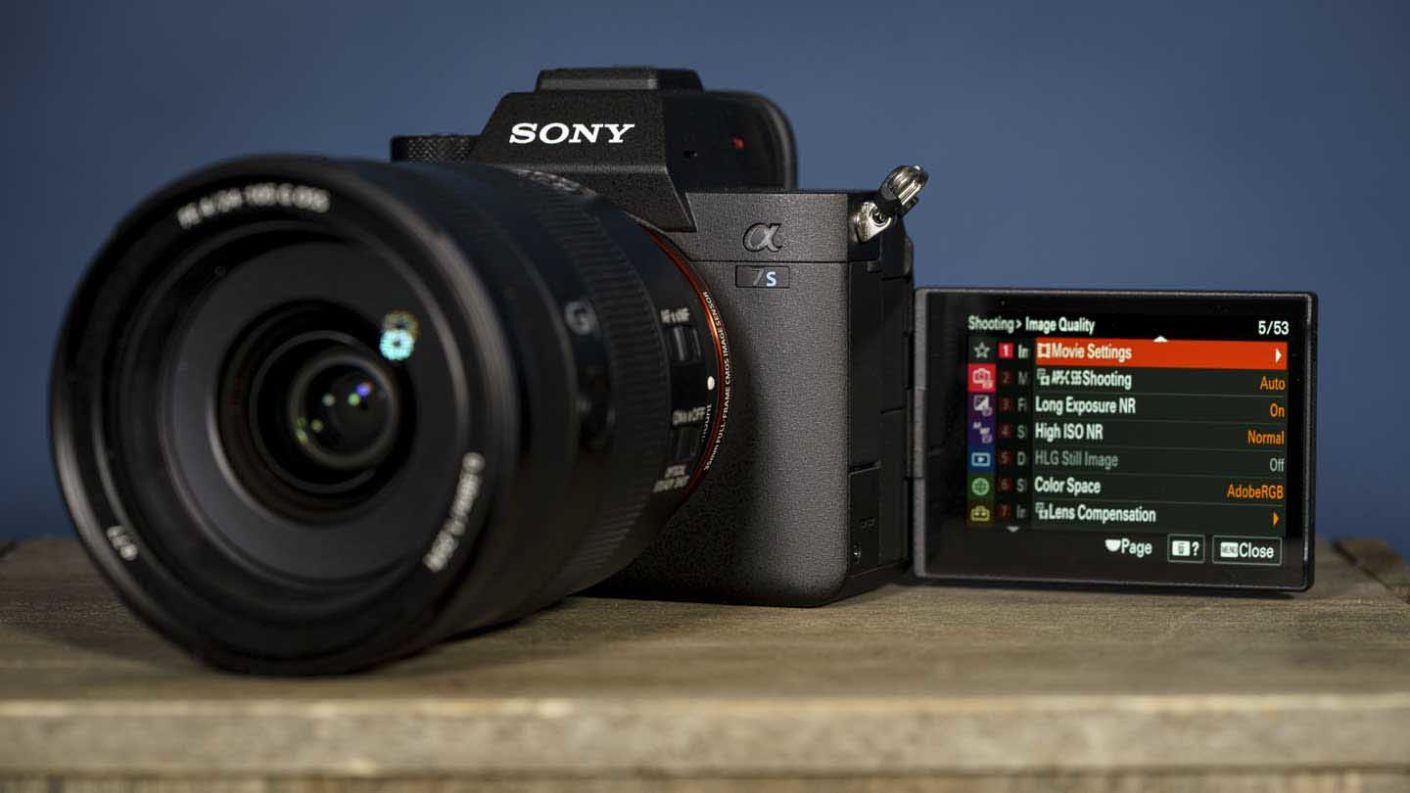
Specification
- Camera type: Full-frame mirrorless
- Announced: 28th July 2020
- Sensor: Full-frame 12.1Mp BSI CMOS
- Processing engine: Bionz XR
- Sensitivity: Video: ISO 80-102,400 expandable ISO 40-409,600. ISO base in S-Log is ISO 640 but it can be expanded down to ISO 160. Stills: ISO 80-102,400 expandable 40-409,600
- Autofocus system: Hybrid with 759 phase detection points and 425 contrast detection points, Real Time Eye AF (Human and Animal for stills, Human for video)
- Stabilisation: 5-axis IBIS and digital, up to 5.5EV shutter speed compensation
- Video resolution: 4K at up 120fps and 1080p at 240fps, 10-bit and 4:2:2 colour, 16-bit raw video over HDMI
- Video file formats: XAVC S,XAVC HS
- Video compression: XAVC S: MPEG-4 AVC/H.264, XAVC HS: MPEG-H HEVC/H.265
- 4K Video details: XAVC HS 4K 3840 x 2160 (4:2:0, 10bit, NTSC): 120p (200Mbps), 60p (150Mbps / 75Mbps / 45Mbps), 24p (100Mbps / 50Mbps / 30Mbps); 3840 x 2160 (4:2:0, 10bit, PAL): 100p (200Mbps), 50p (150Mbps / 75Mbps / 45Mbps); 3840 x 2160 (4:2:2, 10bit, NTSC): 120p (280Mbps), 60p (200Mbps / 100Mbps), 24p (100Mbps / 50Mbps); 3840 x 2160 (4:2:2, 10bit, PAL): 100p (280Mbps), 50p (200Mbps / 100Mbps) XAVC S 4K 3840 x 2160 (4:2:0, 8bit, NTSC): 120p (200Mbps), 60p (150Mbps), 30p (100Mbps / 60Mbps), 24p (100Mbps / 60Mbps); 3840 x 2160 (4:2:0, 8bit, PAL): 100p (200Mbps), 50p (150Mbps), 25p (100Mbps / 60Mbps); 3840 x 2160 (4:2:2, 10bit, NTSC): 120p (280Mbps), 60p (200Mbps), 30p (140Mbps), 24p (100Mbps); 3840 x 2160 (4:2:2, 10bit, PAL): 100p (280Mbps), 50p (200Mbps), 25p (140Mbps) XAVC S-I 4K 3840 x 2160 (4:2:2, 10bit, NTSC) (Approx.): 60p (600Mbps), 30p (300Mbps), 24p (240Mbps); 3840 x 2160 (4:2:2, 10bit, PAL): 50p (500Mbps), 25p (250Mbps)
- Gamut: S-Log2 and S-Log3, S-Gamut3.Cine and S-Gamut3
- Slow and Quick (S&Q) mode options: NTSC: 1fps,2fps,4fps,8fps,15fps,30fps,60fps,120fps, 240fps4, PAL: 1fps,2fps,3fps,6fps,12fps,25fps,50fps,100fps, 200fps
- Still File formats: Raw, JPG, HEIF
- Screen: 3-inch 1,440,000-dot vari-angle touchscreen
- Viewfinder: 0.64-inch type 9,437,184-dot OLED electronic viewfinder, with refresh rate up to 120fps, adjustable magnification up to 0.9x
- Maximum continuous shooting rate: 10fps with mechanical or electronic shutter for up to 1000 uncompressed raw files when a CFexpress Type 1 card is used
- Storage: Dual: SD/SDHC/SDXC (UHS-II) and CFexpress Type A
- Dimensions (W x H x D): 128.9 x 96.9 x 80.8mm / 5 1/8 x 3 7/8 x 3 1/4 inches
- Weight: 699g / 1 lb 8.7 oz
While some videographers may have been hoping for a resolution upgrade from the 12mp A7S II, Sony’s decision to stick with this resolution has resulted in the A7S III boasting even better low-light capabilities than its predecessor, along with a more advanced autofocus system, vari-angle screen, and the highest-resolution viewfinder available.
However, the A7S III is not just about resolution; it promises to make 4K video capture easier and produce the best 4K footage possible from a Sony camera. The quality of the footage is outstanding, and the camera offers a range of video-specific improvements.
Furthermore, the A7S III introduces the highest-resolution electronic viewfinder to date and is the first Sony A7-series camera to feature a vari-angle screen, a feature that videographers and photographers have been demanding.
Overall, the Sony A7S III offers a host of improvements to its video specifications, including a vari-angle screen, excellent viewfinder, and advanced video features, making it an excellent choice for videographers and photographers alike.
£3800
€4200 / $3499For
- Large pixels for great low-light performance
- 4K full-pixel readout without binning and 10-bit depth 4:2:2 colour available in all recording formats
- Vari-angle touchscreen and class-leading electronic viewfinder
Against
- 12Mp seems low resolution for stills
- Uses a new memory card format (CFexpress Type A) that's interchangeable with SD
Sony A7S II
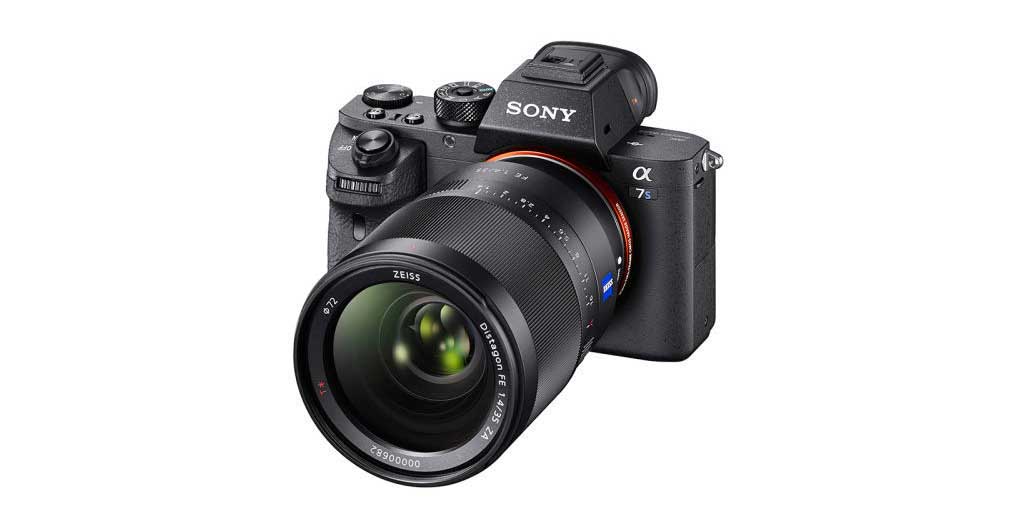
Specification
- Sensor: 12MP full-frame
- Stabilisation: 5-axis
- Colour Modes: S-Gamut3.Cine/S-Log3
- Video: 4K at 30fps and 1080p at 120fps.
The Sony A7S II is still an excellent camera and remains on our list of the best Sony cameras, particularly since its price has dropped now that it has been succeeded by the A7S III.
The camera’s low-resolution sensor has been optimized for video, resulting in maximum quality and making it a popular choice as a lightweight broadcast camera. The 12MP sensor enables full pixel readout without pixel binning, making the most of the sensor’s capabilities.
While its features and layout are more similar to a stills camera than a video camera, the A7S II makes it easy for photographers to transition to videography. It also includes professional log color modes like S-Gamut3.Cine/S-Log3, allowing video editors and directors to seamlessly blend footage from multiple cameras.
To capture high-quality video, the A7S II can shoot at 4K, 30fps, and 1080p, 120fps. Its small size and light weight make it ideal for handheld use, and the camera features 5-axis image stabilization to ensure smooth, fluid footage.
£1999
For
- Internal 4K recording
- Excellent in low light
- Professional-quality video
Against
- 8-bit video
- No built-in ND filter
Best Sony Camera for professionals
The A9 was the camera that redefined what is possible in the mirrorless format and the A9 II took things a step further, but the Sony A1 is the camera that not only matches but goes beyond what is offered by top-flight DSLRs like the Canon EOS-1D X Mark III and Nikon D6.
Sony A1
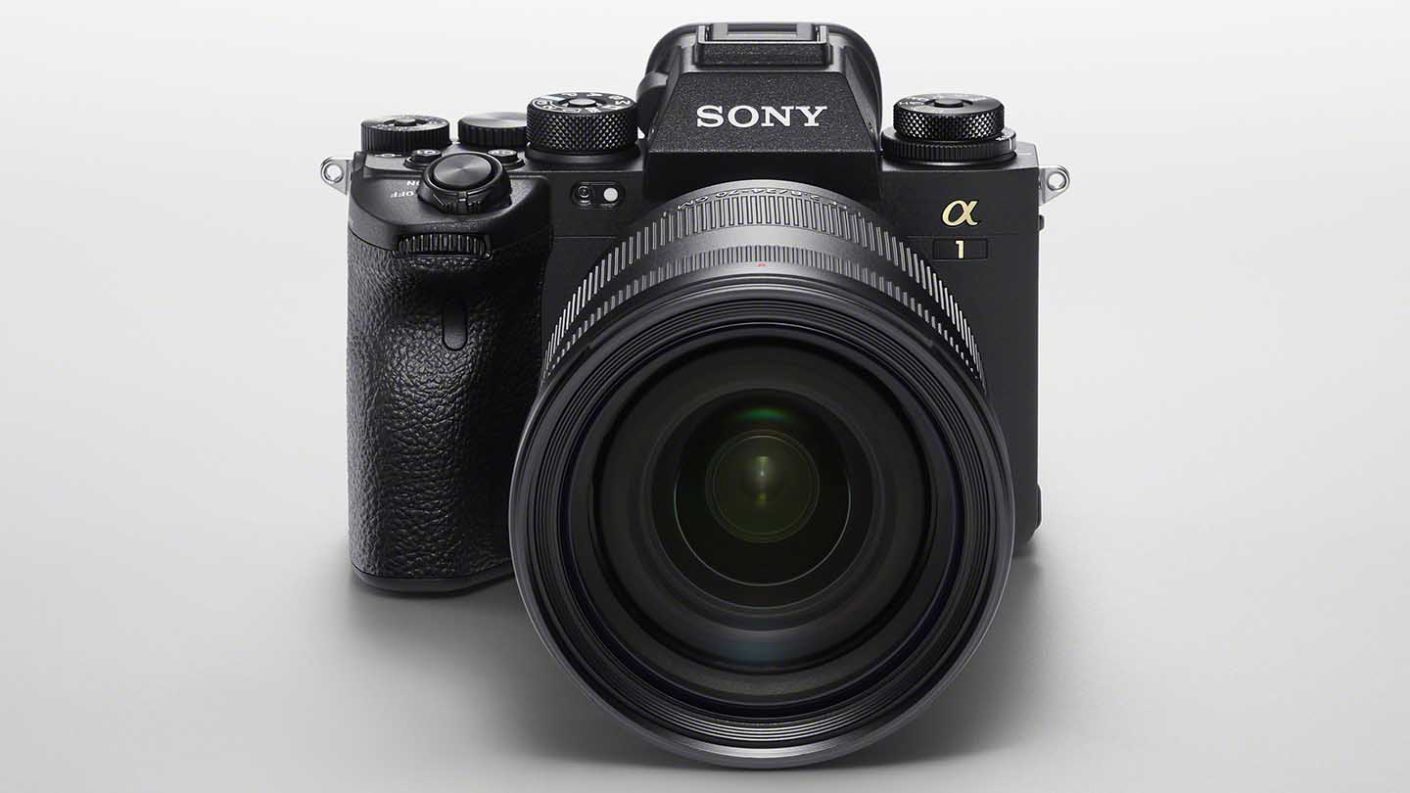
Specification
- Camera type: Full-frame mirrorless
- Announced: 26th January 2021
- Sensor: 50.1Mp full frame (35.9 x 24.0mm), Exmor RS CMOS sensor
- Lens mount: FE
- Sensitivity range: Stills: ISO 100-32000 (expandable to ISO 50 to ISO 102400) Video: ISO ISO 100-32000 (expandable to ISO 100-12800)
- Still Image format: Jpeg, HEIF, raw (Sony ARW 4.0)
- Video format & compression: XAVC S: MPEG-4 AVC/H.264, XAVC HS: MPEG-H HEVC/H.265
- 8K Video (XAVC HS): 7680 x 4320 (4:2:0, 10bit, NTSC) (Approx.): 30p(400Mbps / 200 Mbps), 24p(400Mbps / 200 Mbps), 7680 x 4320 (4:2:0, 10bit, PAL) (Approx.): 25p(400Mbps / 200 Mbps)
- 4K Video (XAVC HS): 3840 x 2160 (4:2:0, 10bit, NTSC) (Approx.): 120p (200Mbps), 60p (150Mbps / 75Mbps / 45Mbps), 24p (100Mbps / 50Mbps / 30Mbps); 3840 x 2160 (4:2:0, 10bit, PAL) (Approx.): 100p (200Mbps), 50p (150Mbps / 75Mbps / 45Mbps); 3840 x 2160 (4:2:2, 10bit, NTSC) (Approx.): 120p (280Mbps), 60p (200Mbps / 100Mbps), 24p (100Mbps / 50Mbps); 3840 x 2160 (4:2:2, 10bit, PAL) (Approx.): 100p (280Mbps), 50p (200Mbps / 100Mbps)
- 4K Video (XAVC S): 3840 x 2160 (4:2:0, 8bit, NTSC) (Approx.): 120p (200Mbps), 60p (150Mbps), 30p (100Mbps / 60Mbps), 24p (100Mbps / 60Mbps); 3840 x 2160 (4:2:0, 8bit, PAL) (Approx.): 100p (200Mbps), 50p (150Mbps), 25p (100Mbps / 60Mbps); 3840 x 2160 (4:2:2, 10bit, NTSC) (Approx.): 120p (280Mbps), 60p (200Mbps), 30p (140Mbps), 24p (100Mbps); 3840 x 2160 (4:2:2, 10bit, PAL) (Approx.): 100p (280Mbps), 50p (200Mbps), 25p (140Mbps)
- 4K Video (XAVC S-I): 3840 x 2160 (4:2:2, 10bit, NTSC) (Approx.): 60p (600Mbps), 30p (300Mbps), 24p (240Mbps); 3840 x 2160 (4:2:2, 10bit, PAL) (Approx.): 50p (500Mbps), 25p (250Mbps)
- Movie functions: Audio Level Display, Audio Rec Level, PAL/NTSC Selector, Proxy Recording (1280 x 720 (6Mbps), 1920 x 1080(9Mbps), 1920 x 1080(16Mbps)), TC/UB, Auto Slow Shutter, Gamma Disp. Assist, raw output(HDMI)
- Autofocus system: Hybrid AF with 759 phase detection points and 425 contrast detection points, Still images: Human (Right/Left Eye Select) / Animal (Right/Left Eye Select) / Bird, Movie: Human (Right/Left Eye Select), sensitive down to -4EV
- Maximum continuous shooting rate: Mechanical shutter: 10fps, Electronic shutter 30fps
- Viewfinder: 0.64-inch 9,437,184-dot EVF with 100% coverage and up to 0.9x magnification. It also offers 0.90x viewfinder magnification, 41° diagonal field of view with 25mm-high eyepoint
- Screen: 3-inch 1,440,000-dot tilting touchscreen
- Stills shutter speed range: Mechanical shutter: 1/8000-30sec plus Bulb, Electronic shutter: 1/32000-30sec plus Bulb
- Max flash sync speed (full-frame): Mechanical shutter: 1/400 sec, Electronic shutter: 1/200 sec
- Image stabilisation: 5-axis giving up to 5.5EV compensation
- Storage: Dual SD/SDHC/SDXC (UHS-I/II) & CFexpress Type A slots
- Connection ports: Sync, 3.5mm headphone, 3.5mm mic, LAN
- Battery: NP-FZ100 rechargeable Li-ion battery giving 400 shots with the viewfinder or 530 with the screen
- Dimensions (WxHxD): 128.9 x 96.9 x 80.8mm / 5 1/8 x 3 7/8 x 3 1/4 inches
- Weight (including battery & memory card): 737g / 1 lb 10.0 oz
Sony’s Alpha A1 is the company’s most advanced camera yet, offering a combination of a high-resolution full-frame sensor and lightning-fast performance. It comes equipped with a new 50.1Mp full-frame stacked Exmor RS image sensor and can perform up to 120 AF/AE calculations per second.
The A1’s impressive processing power enables it to shoot at up to 30fps, with a large buffer that allows for sequences of up to 155 full-frame compressed RAW images or 165 full-frame JPEGs to be captured at that rate.
Moreover, the A1 features improved Real-time Eye AF for humans and animals and uses high-level subject recognition technology for Real-time Eye AF for birds. Its algorithms also maintain AF tracking if a sitting bird takes off or the framing changes.
The A1 is the first Sony Alpha series camera to offer 8K 30p 10-bit 4:2:0 XAVC HS video recording. It also boasts 4K 120p / 60p 10-bit 4:2:2 video capabilities and S-Cinetone color. It uses 8.6K oversampling for enhanced resolution, and 8K footage can be used for 4K editing during post-production.
The camera also features a 9.44 million dot OLED Quad-XGA electronic viewfinder with a refresh rate of up to 240 fps, ensuring no blackout and delivering the highest resolution in its class. Additionally, it has a 3-inch 1,440,000-dot tilting touchscreen with the revised menu arrangement and more extensive touch-control found in the Sony A7S III.
For those who require even more resolution, the A1 includes Sony’s Pixel Shift Multi Shooting mode, which enables the compositing of 16 full-resolution images. Overall, the Sony A1 is a game-changer, offering exceptional capabilities and advanced features that set it apart from other cameras on the market.
You can also find the latest Sony A1 offers at Amazon UK and Amazon US.
£6500
$6500For
- Excellent combination of speed and resolution
- Great range of video features including 8K video
- Superb electronic viewfinder
Against
- It takes a while to figure out the optimum settings
- Underwhelming screen specification
- Manual switching between the Eye AF subjects
Best Sony camera for travel
Sony’s A7 series of full-frame cameras are remarkably small and paired with the right lens such as the recently announced FE 50mm f2.5 G, FE 40mm f2.5 G, FE 24mm f2.8 G, or the excellent Sonnar T* FE 35mm F2.8 ZA, they make a great choice for travel. However, if you want the smallest interchangeable lens full-frame Sony camera, the Sony A7C is the one to go for.
Sony A7C
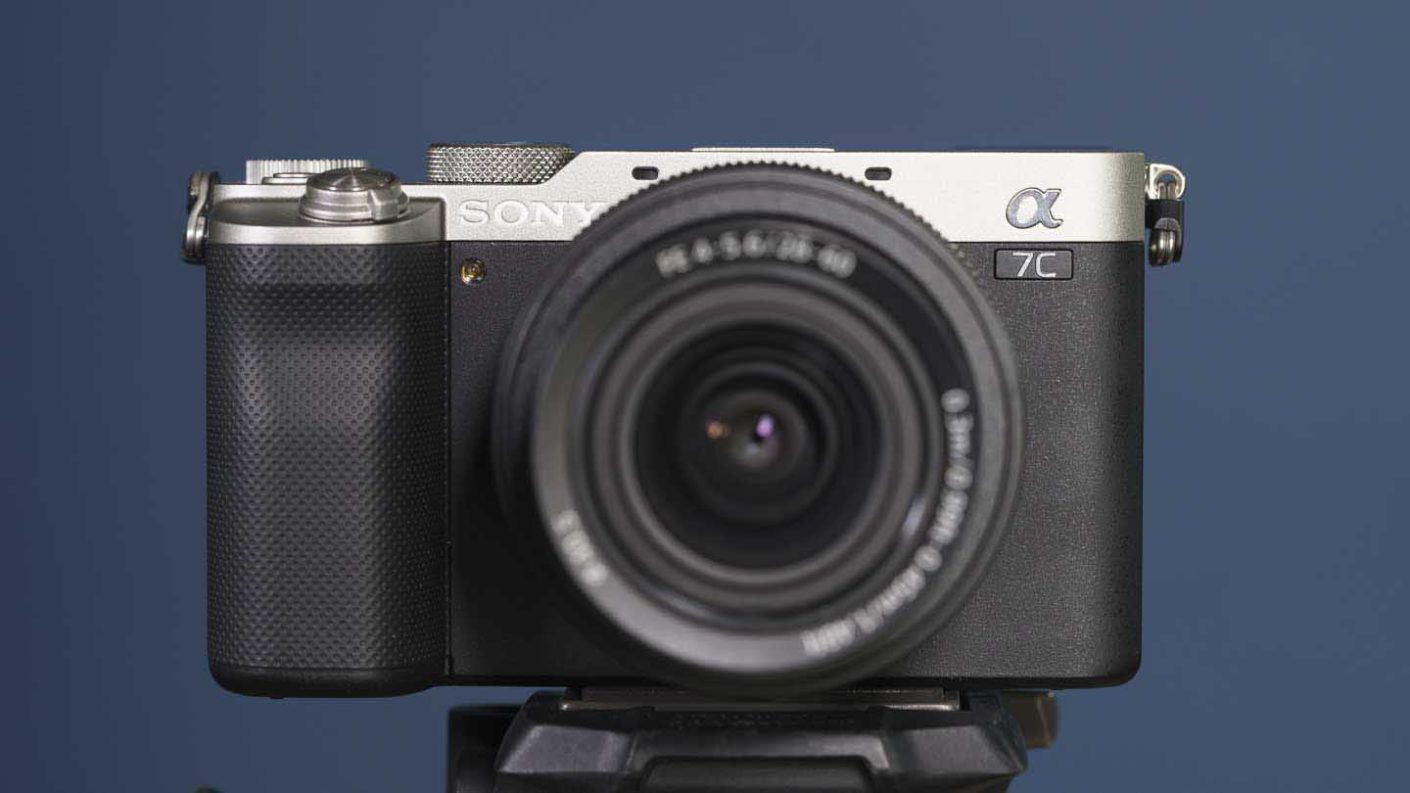
Specification
- Announced: 15th September 2020
- Camera type: Full-frame mirrorless
- Sensor: 24.2Mp Full frame (35.6×23.8mm), Exmor R CMOS sensor
- Processor: Bionz X
- Lens mount: Sony E
- Sensitivity range: ISO 100-51,200, expandable to ISO 50-204,800
- Maximum continuous shooting rate: 10fps with full AF and metering
- Video resolution: 4K: 3840 x 2160 (4:2:0, 8bit, NTSC) (Approx.) 30p (100Mbps / 60Mbps), 3840 x 2160 (4:2:0, 8bit, NTSC) (Approx.) 24p (100Mbps / 60Mbps), 3840 x 2160 (4:2:0, 8bit, PAL) (Approx.) 25p (100Mbps / 60Mbps)
- Autofocus system: Hybrid with 693 phase detection points and 425 contrast detection points
- Eye AF: Stills: Human or Animal, Video: Human
- Viewfinder: 0.39-inch 2,359,296-dot OLED electronic viewfinder
- Screen: Vari-angle 3-inch 921,600-dot vari-angle touchscreen
- Stabilisation: 5-axis in-body image stabilisation giving up to 5EV shutter speed compensation
- Storage: SD/SDHC/SDXC (UHS-I/II)
- Dimensions (W x H x D): 124.0 x 71.1 x 59.7mm / 5 x 2 7/8 x 2 3/8inches
- Weight: 509g / 1lb 2.0oz with battery and card
The Sony A7C is the smallest of the Sony A7-series cameras and is an excellent option for those seeking a compact full-frame camera with exceptional autofocus and noise control systems. It has a flat-topped rectangular body that resembles the Sony A6600, but it features a vari-angle screen rather than a tilting monitor. Inside, the A7C has the same 24Mp sensor and core features as the Sony A7 III.
When paired with the FE 28-60mm f/4-5.6 kit lens, which is a small collapsible optic, the A7C is an attractive choice for travel and everyday photography. However, to achieve this small size, Sony had to make a few compromises on the handling, such as eliminating the joystick on the back of the camera and including only one control dial. Additionally, the electronic viewfinder is the type of unit more commonly found in APS-C format cameras.
For those who can live without a vari-angle screen and don’t mind a slightly larger camera, the Sony A7 III, which sits above the A7C in the range, is an excellent alternative that costs a little less.
£1709
$1798For
- Small for a full-frame camera
- Vari-angle screen
- Excellent AF system
Against
- Limited touch-control
- Complex menu
- Underwhelming viewfinder
Best Sony camera for vlogging and YouTube
Vlogging has become very popular and lots of people are trying videoing themselves for the first time. However, it’s estimated that over 70% of vlogs are recorded on a phone. Sony is hoping to change that.
Sony ZV-1
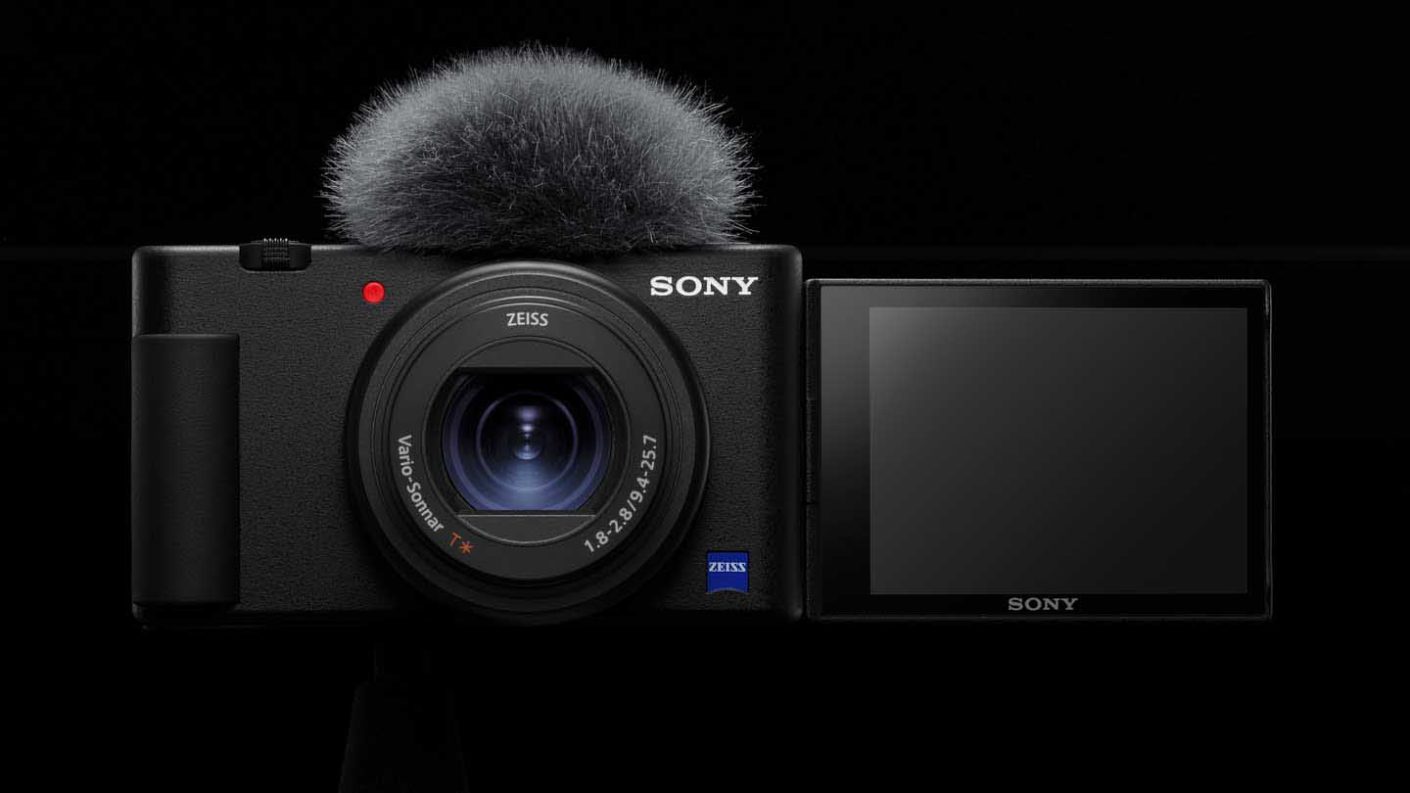
Specification
- Camera type: Compact
- Announced: 26th May 2020
- Sensor: 20.1Mp 1-inch type (13.2mm x 8.8mm) Exmor RS CMOS
- Lens: Zeiss Vario-Sonnar T* 9.4-25.7mmm (24-70mm equivalent) f/1.8-2.8
- Sensitivity range: Stills: ISO 100-25,600, Video: ISO 125-12,800
- Autofocus: 315 focal-plane phase-detection AF points, Eye AF: Humans (stills and video) or Animal (stills)
- Burst Mode: Hi: 24fps, Mid: 10fps, Low: 3fps
- Video: 4K in-body movie recording with full pixel readout and no binning, Log & Gamma options, slow-mo at up to 1000fps
- Viewfinder: No
- Screen: Vari-angle 3-inch touchscreen
- Stabilisation: Optical for stills, optical and electronic for video
- Hotshoe: Multi-interface (can connect an XLR mic via an adapter)
- Storage: SD/SDHC/SDXC
- Dimensions (WxHxD): 105.5 x 60 x 43.5mm / 4 1/4 × 2 3/8 × 1 3/4inches
- Weight: 294g with battery and SD card or body only
The Sony ZV-1 is an ideal camera for vloggers, offering everything they could wish for in a compact package and featuring Sony’s excellent AF system. It includes features that help inexperienced photographers, videographers, and vloggers achieve good results, with the option to control exposure automatically or manually, a built-in ND filter, and Log and Gamma control. The ZV-1 is perfect for producing great 4K video while allowing for control when needed, making it an enticing choice for vloggers.
While much of the Sony ZV-1’s specifications are similar to the Sony RX100 series of compact cameras, there are a few notable differences that make it better suited for vlogging. Notably, the ZV-1 features a 1-inch type stacked Exmor RS CMOS sensor with 20.1 million effective pixels, which is relatively large for a compact camera and delivers advantages for image quality.
Moreover, the Exmor RS CMOS sensor brings phase-detection focusing, which is generally faster and more decisive than contrast detection. The ZV-1 features a total of 315 phase detection AF points that are available for use in stills and video mode. Overall, the Sony ZV-1 is an excellent option for vloggers seeking a high-quality camera that is easy to use and delivers exceptional results.
£700
$749.99For
- Designed specifically for vloggers but also a capable stills camera
- Stabilised 4K video
- Vari-angle touchscreen
Against
- No viewfinder built-in
- The redesigned grip is best for left-handers
Sony RX100 VII
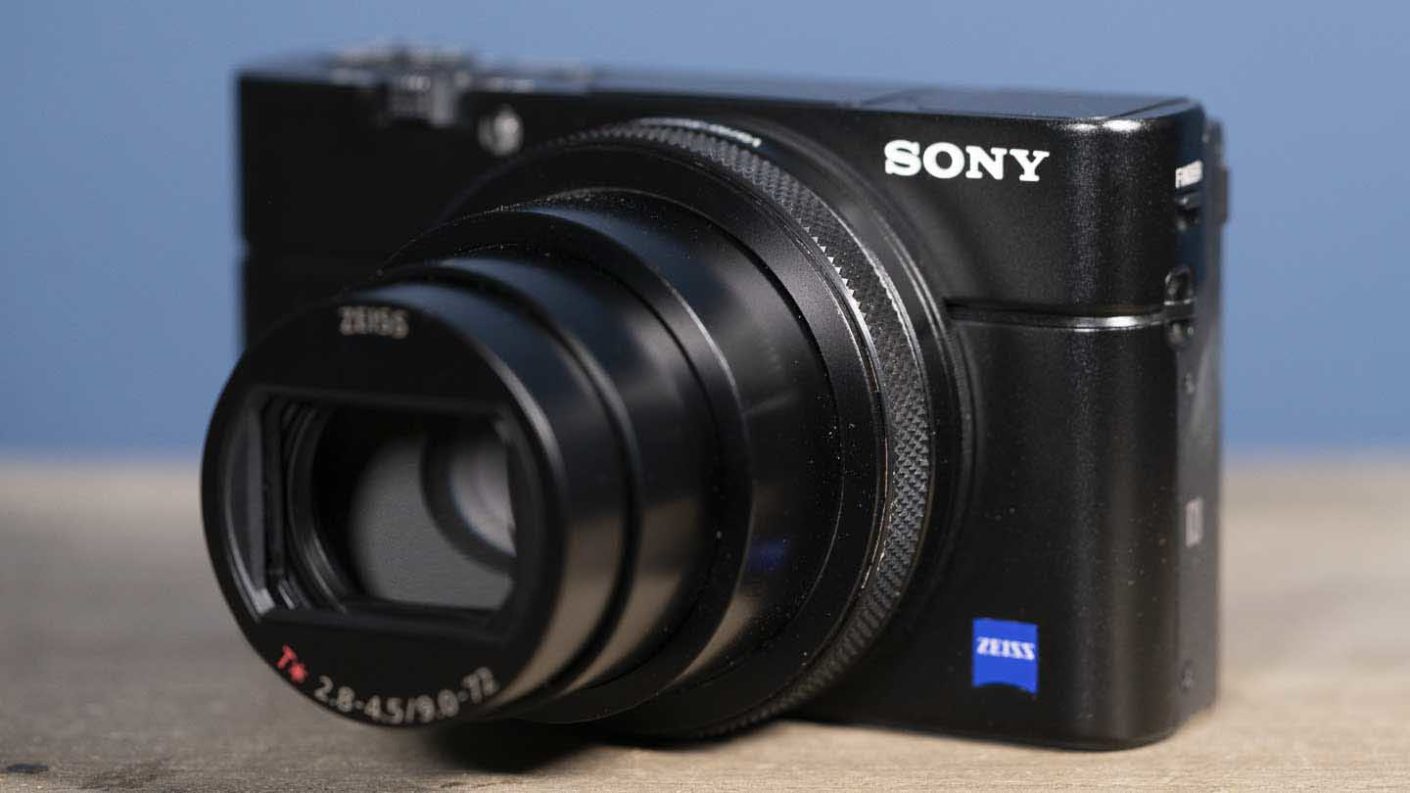
Specification
- Camera type: Compact
- Sensor: 20.1Mp 1-inch type (13.2mm x 8.8mm) Exmor RS CMOS
- Lens: ZEISS Vario-Sonnar T* 9-72mmm (24-200mm equivalent) f/2.8-4.5
- Autofocus: 357 focal-plane phase-detection and 425 contrast-detection AF points
- Burst Mode: 90fps in JPEG or Raw format in Single Burst Shooting mode
- Video: 4K in-body movie recording with full pixel readout
- Viewfinder: 0.39-inch 2,359,296-dot OLED (pop-up)
- Screen: Tilting 3-inch 921,600-dot TFT touchscreen (up 180-degrees, down 90-degrees)
- Storage: SD/SDHC/SDXC
- Dimensions (WxHxD): 101.6 x 58.1 x 42.8 mm / 4 x 2 3/8 x 1 11/16-inch
- Weight: 302g / 10.7oz with battery and SD card or 275g / 9.8oz body only
The Sony RX100 VII caused a stir when it was announced, promising ‘A9-level’ AF performance and 90fps single burst shooting. This reinforced Sony’s reputation as a true innovator in the market.
Under the hood, the RX100 VII features a 1-inch, stacked 20.1-megapixel Exmor RS CMOS sensor with a DRAM chip and Sony’s Bionz X image processor. On the outside, there is a ZEISS Vario-Sonnar T* 24-200mmviii F2.8-4.5 lens.
What’s really exciting, however, is the technology the RX100 VII inherits from Sony’s A9. Like the A9, the RX100 VII offers blackout-free shooting, providing a completely live view, even when continuous shooting at 20fps.
The RX100 VII also boasts ‘A9-level’ AF/AE tracking performance during continuous shooting, meaning the camera performs AF/AE calculations up to 60 times per second and captures fast-moving action at 20fps with AF/AE tracking.
The camera also features Sony’s Real-time Eye AF and Real-time Tracking modes, making their debut for the first time in a compact camera. With 357 focal-plane phase-detection AF points and 425 contrast-detection AF points, its AF system is among the best you will find in a camera of this size.
Additionally, the Sony RX100 VII introduced a new Single Burst Shooting mode, capturing a high-speed shot at up to 90fps in JPEG or Raw format using the anti-distortion shutter. Sony describes the mode as enabling photographers to frame fast-moving action and shoot as if capturing a single frame, but the RX100 VII will deliver seven frames, taken at 90fps, 60fps, or 30fps.
The Sony RX100 VII is also targeted at vloggers, with solid movie-making credentials, including 4K in-body movie recording with full pixel readout and no pixel binning in high bit rate XAVCS, Real-time Tracking and Real-time Eye AF for video, and a microphone input.
£1200
$1198 / €1300For
- Best-in-its-class AF system
- Stabilised 4K video
- Great focal length range
Against
- Front lacks grip
- Limited use of the touchscreen functionality
Best Sony camera for wildlife photography
The case for DSLRs as the camera for wildlife photographers is less clear-cut than it was a few years back and now there are also some mirrorless cameras that make a great choice for wildlife photography. The new Sony A1 and Sony A9 II are particulary compelling choices.
Sony A1

Specification
- Camera type: Full-frame mirrorless
- Announced: 26th January 2021
- Sensor: 50.1Mp full frame (35.9 x 24.0mm), Exmor RS CMOS sensor
- Lens mount: FE
- Sensitivity range: Stills: ISO 100-32000 (expandable to ISO 50 to ISO 102400) Video: ISO ISO 100-32000 (expandable to ISO 100-12800)
- Still Image format: Jpeg, HEIF, raw (Sony ARW 4.0)
- Video format & compression: XAVC S: MPEG-4 AVC/H.264, XAVC HS: MPEG-H HEVC/H.265
- 8K Video (XAVC HS): 7680 x 4320 (4:2:0, 10bit, NTSC) (Approx.): 30p(400Mbps / 200 Mbps), 24p(400Mbps / 200 Mbps), 7680 x 4320 (4:2:0, 10bit, PAL) (Approx.): 25p(400Mbps / 200 Mbps)
- 4K Video (XAVC HS): 3840 x 2160 (4:2:0, 10bit, NTSC) (Approx.): 120p (200Mbps), 60p (150Mbps / 75Mbps / 45Mbps), 24p (100Mbps / 50Mbps / 30Mbps); 3840 x 2160 (4:2:0, 10bit, PAL) (Approx.): 100p (200Mbps), 50p (150Mbps / 75Mbps / 45Mbps); 3840 x 2160 (4:2:2, 10bit, NTSC) (Approx.): 120p (280Mbps), 60p (200Mbps / 100Mbps), 24p (100Mbps / 50Mbps); 3840 x 2160 (4:2:2, 10bit, PAL) (Approx.): 100p (280Mbps), 50p (200Mbps / 100Mbps)
- 4K Video (XAVC S): 3840 x 2160 (4:2:0, 8bit, NTSC) (Approx.): 120p (200Mbps), 60p (150Mbps), 30p (100Mbps / 60Mbps), 24p (100Mbps / 60Mbps); 3840 x 2160 (4:2:0, 8bit, PAL) (Approx.): 100p (200Mbps), 50p (150Mbps), 25p (100Mbps / 60Mbps); 3840 x 2160 (4:2:2, 10bit, NTSC) (Approx.): 120p (280Mbps), 60p (200Mbps), 30p (140Mbps), 24p (100Mbps); 3840 x 2160 (4:2:2, 10bit, PAL) (Approx.): 100p (280Mbps), 50p (200Mbps), 25p (140Mbps)
- 4K Video (XAVC S-I): 3840 x 2160 (4:2:2, 10bit, NTSC) (Approx.): 60p (600Mbps), 30p (300Mbps), 24p (240Mbps); 3840 x 2160 (4:2:2, 10bit, PAL) (Approx.): 50p (500Mbps), 25p (250Mbps)
- Movie functions: Audio Level Display, Audio Rec Level, PAL/NTSC Selector, Proxy Recording (1280 x 720 (6Mbps), 1920 x 1080(9Mbps), 1920 x 1080(16Mbps)), TC/UB, Auto Slow Shutter, Gamma Disp. Assist, raw output(HDMI)
- Autofocus system: Hybrid AF with 759 phase detection points and 425 contrast detection points, Still images: Human (Right/Left Eye Select) / Animal (Right/Left Eye Select) / Bird, Movie: Human (Right/Left Eye Select), sensitive down to -4EV
- Maximum continuous shooting rate: Mechanical shutter: 10fps, Electronic shutter 30fps
- Viewfinder: 0.64-inch 9,437,184-dot EVF with 100% coverage and up to 0.9x magnification. It also offers 0.90x viewfinder magnification, 41° diagonal field of view with 25mm-high eyepoint
- Screen: 3-inch 1,440,000-dot tilting touchscreen
- Stills shutter speed range: Mechanical shutter: 1/8000-30sec plus Bulb, Electronic shutter: 1/32000-30sec plus Bulb
- Max flash sync speed (full-frame): Mechanical shutter: 1/400 sec, Electronic shutter: 1/200 sec
- Image stabilisation: 5-axis giving up to 5.5EV compensation
- Storage: Dual SD/SDHC/SDXC (UHS-I/II) & CFexpress Type A slots
- Connection ports: Sync, 3.5mm headphone, 3.5mm mic, LAN
- Battery: NP-FZ100 rechargeable Li-ion battery giving 400 shots with the viewfinder or 530 with the screen
- Dimensions (WxHxD): 128.9 x 96.9 x 80.8mm / 5 1/8 x 3 7/8 x 3 1/4 inches
- Weight (including battery & memory card): 737g / 1 lb 10.0 oz
Thanks to its combination of fast responses, incredible Real-Time Eye AF for humans, animals and birds, 30fps shooting capability and 50Mp full-frame sensor, the Sony A1 is a very attractive choice for wildlife photographers who can stomach its price tag.
£6500
$6500For
- Excellent combination of speed and resolution
- Great range of video features including 8K video
- Superb electronic viewfinder
Against
- It takes a while to figure out the optimum settings
- Underwhelming screen specification
- Manual switching between the Eye AF subjects
Sony A9 II
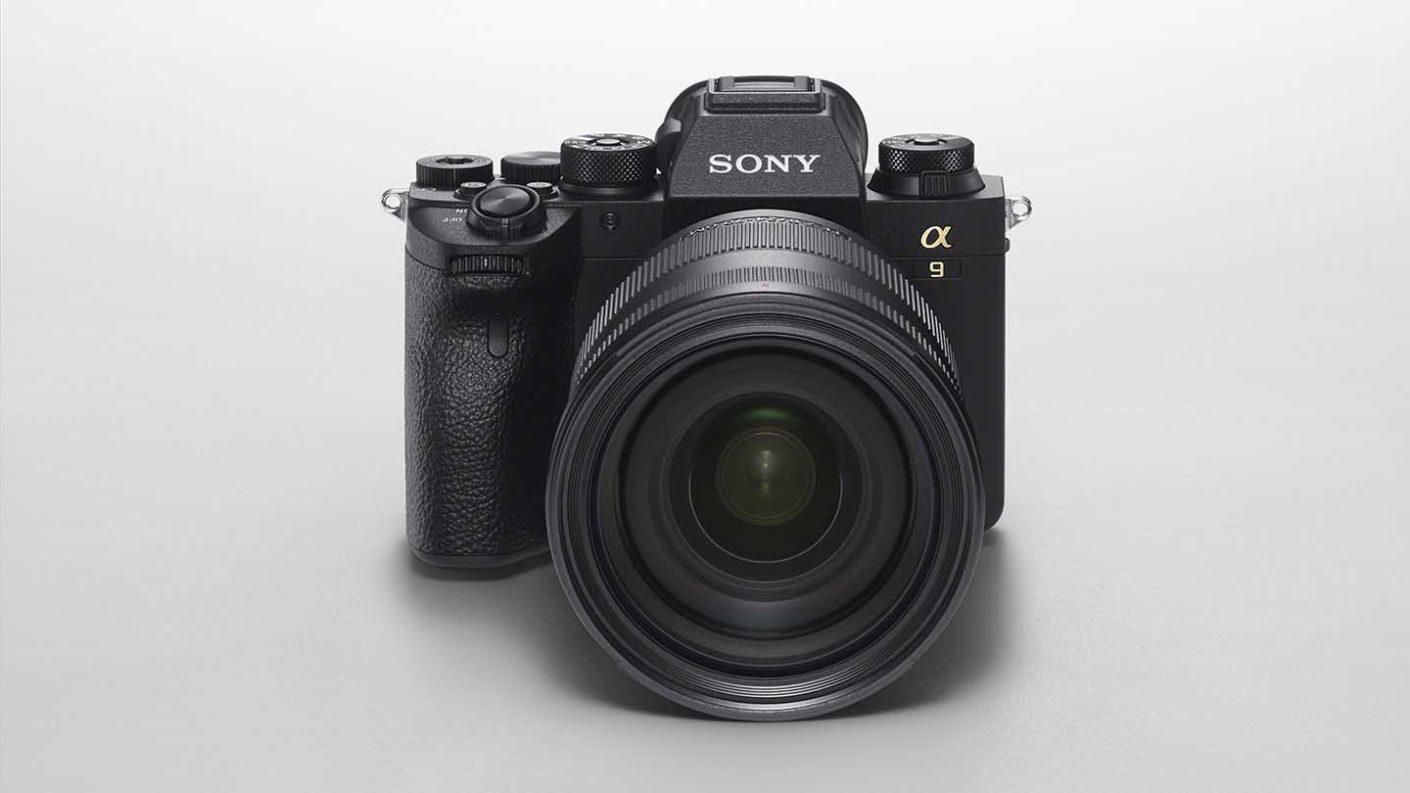
Specification
- Camera type: Full-frame mirrorless
- Sensor: Stacked 24-megapixel full-frame sensor
- Lens mount: FE
- Autofocus: 693-point phase detection AF system, with 425 contrast AF points
- Maximum continuous shooting rate: 20fps
- Maximum video resolution: 4K
- Viewfinder: 0.5-inch electronic viewfinder, 3,6m-dot, 100% coverage
- Screen: 3-inch, 1.4m-dot, tilting, touch-sensitive
- Connectivity: Built-in 1000BASE-T Ethernet terminal
The Sony RX100 VII caused a stir when it was announced, promising ‘A9-level’ AF performance and 90fps single burst shooting. This reinforced Sony’s reputation as a true innovator in the market.
Under the hood, the RX100 VII features a 1-inch, stacked 20.1-megapixel Exmor RS CMOS sensor with a DRAM chip and Sony’s Bionz X image processor. On the outside, there is a ZEISS Vario-Sonnar T* 24-200mmviii F2.8-4.5 lens.
What’s really exciting, however, is the technology the RX100 VII inherits from Sony’s A9. Like the A9, the RX100 VII offers blackout-free shooting, providing a completely live view, even when continuous shooting at 20fps.
The RX100 VII also boasts ‘A9-level’ AF/AE tracking performance during continuous shooting, meaning the camera performs AF/AE calculations up to 60 times per second and captures fast-moving action at 20fps with AF/AE tracking.
The camera also features Sony’s Real-time Eye AF and Real-time Tracking modes, making their debut for the first time in a compact camera. With 357 focal-plane phase-detection AF points and 425 contrast-detection AF points, its AF system is among the best you will find in a camera of this size.
Additionally, the Sony RX100 VII introduced a new Single Burst Shooting mode, capturing a high-speed shot at up to 90fps in JPEG or Raw format using the anti-distortion shutter. Sony describes the mode as enabling photographers to frame fast-moving action and shoot as if capturing a single frame, but the RX100 VII will deliver seven frames, taken at 90fps, 60fps, or 30fps.
The Sony RX100 VII is also targeted at vloggers, with solid movie-making credentials, including 4K in-body movie recording with full pixel readout and no pixel binning in high bit rate XAVCS, Real-time Tracking and Real-time Eye AF for video, and a microphone input.
£4800
$4500For
- Built for speed
- Outstanding AF
- Enhanced design
Against
- Menu system convoluted
- Quite expensive
Best Sony camera for beginners
When you’re starting out with photography, you want a capable camera but you don’t want to be overwhelmed. The Sony A6100 makes a great choice. For a more in-depth look at Sony’s entry-level options, check out our guide to the best Sony cameras for beginners.
Sony A6100
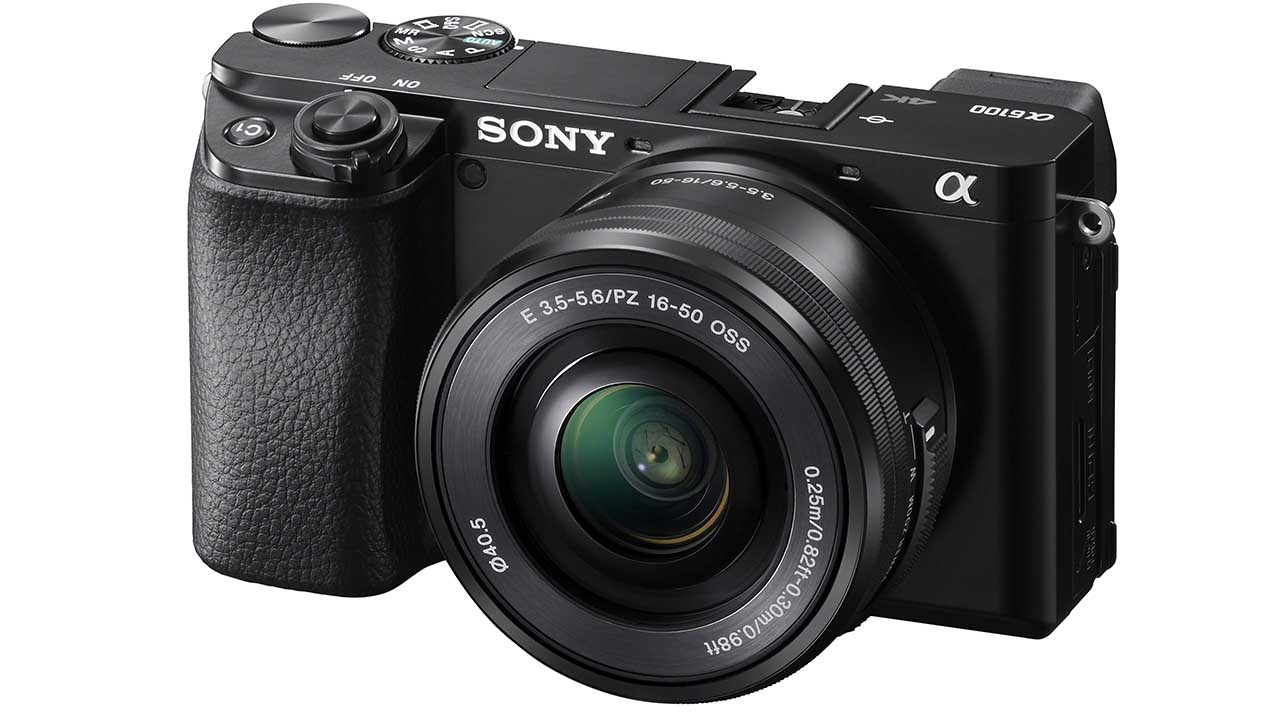
Specification
- Sensor: 24.2MP Exmor CMOS image sensor
- Video: 4K movie recording with full-pixel readout
- Screen: 180-degree tiltable, 3.0-type 921k-dot LCD touch screen
- Autofocus: 425 phase-detection and 425 contrast-detection AF points
The Sony A6100 is a camera that is designed for novice photographers who are looking to grow their skills. It has a range of features that are comparable to the more advanced Sony A6600.
The camera boasts internal 4K movie recording in Super 35mm format, with full pixel readout that captures almost 2.4 times the amount of information needed for 4K movies. This is great for those who are interested in making videos, and the integrated microphone input and built-in interval shooting feature make it even more appealing.
The A6100 also shares many of the same features as the A6600, including a 24.2MP Exmor CMOS image sensor, the latest BIONZ X image processor, and a front-end LSI. Its 425 phase-detection AF points cover approximately 84% of the image area, allowing for lightning-fast autofocus acquisition in just 0.02 seconds. It also has 425 contrast-detection AF points.
Real-time Tracking and Real-time Eye AF modes, which provide faster and more accurate autofocus performance when capturing images of humans and animals, are also included on the A6100.
£830
€900For
- Real-time Tracking and Eye AF
- 4K video
- Very fast AF
Against
- No stabilisation
- There's a mic input but no headphone port

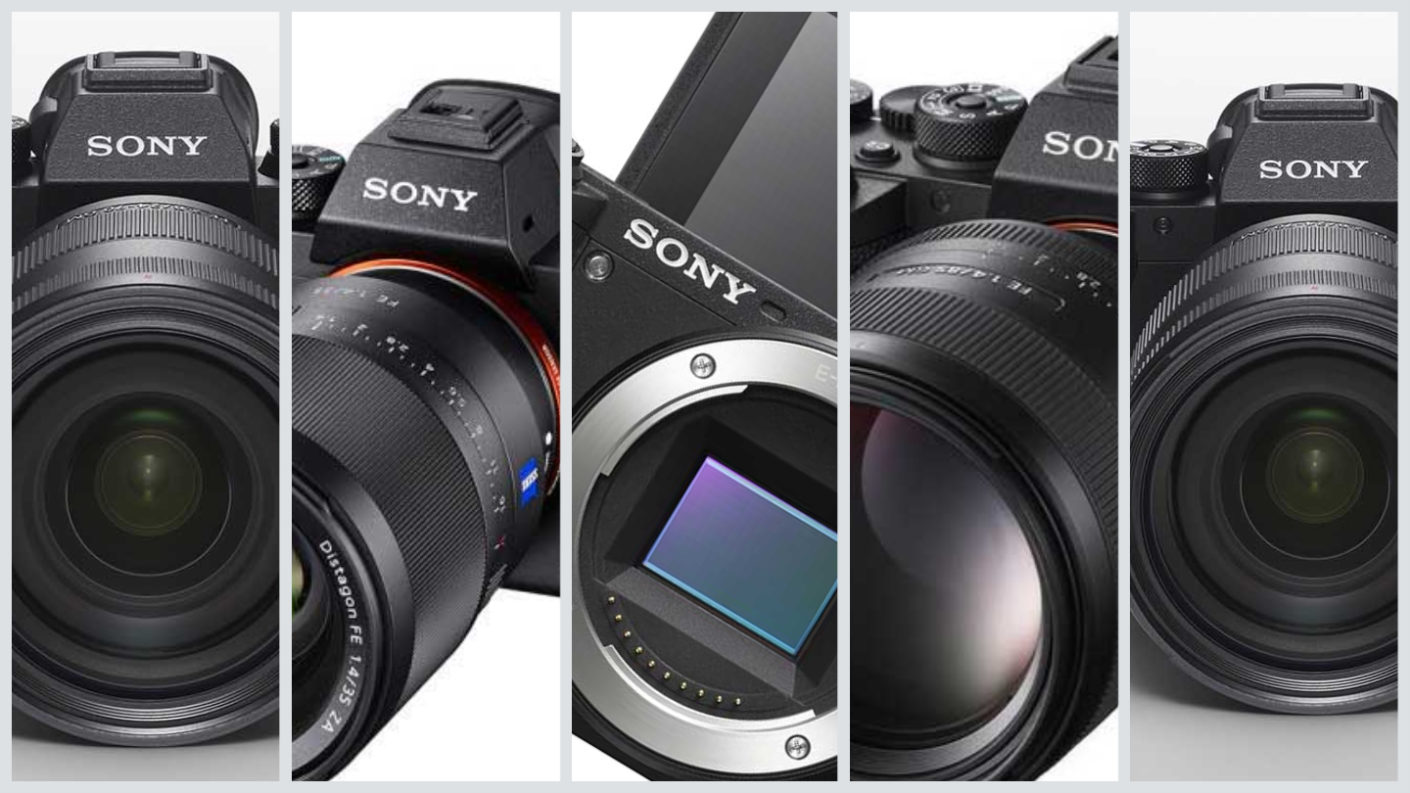



spelling error on the sony a7III’s sensitivity range
So there was, thanks for letting us know. It’s corrected now.